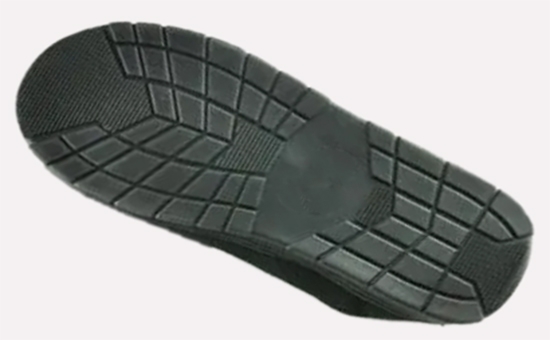
Latex reclaimed rubber has high mechanical strength and good elasticity. It can directly replace natural rubber or be used in combination with natural rubber to prepare sponge foam soles, effectively reducing the cost of raw materials. In actual production, foaming agent H (dinitrosopentamethylenetetramine) is the most commonly used foaming agent in sponge rubber. When foaming agent H is used in latex reclaimed rubber sponge soles, rubber products manufacturers need Pay attention to the adding time of the foaming agent to avoid problems such as delamination of the sponge.
1. Basic properties of blowing agent H
Foaming agent H is milky yellow powder, easily soluble in acetone, slightly soluble in water and alcohol, slightly soluble in chloroform, and almost insoluble in ether. In the actual application process, the blowing agent H decomposes at 200°C, but the decomposition temperature will drop from 200°C to 130°C after mixing with 2YLYY430 stearic acid in the rubber compound. Foaming agent H does not avoid alkaline substances, it decomposes when exposed to acid, has a strong pore-forming force in the rubber compound, and can achieve good results when vulcanized at 110°C.
When foaming agent H is neutral, it has stable storage at room temperature and has no effect on the vulcanization characteristics of various accelerators.
2. Foaming characteristics of blowing agent H
Blowing agent H has a large amount of vulcanization and high foaming efficiency. The nitrogen filling the pores has a small permeability to the rubber, which can effectively prevent the collapse of the latex reclaimed rubber sponge sole. The foaming agent H has good dispersibility in the rubber compound. It can be used alone or in combination with other foaming agents. After adding the auxiliary foaming agent, the decomposition temperature of this product is compatible with the vulcanization temperature of the rubber compound. In actual production, when foaming agent H is used alone, the pore size is finer, and when alum and soda are used alone, the pore size is large and the gel is hard. Therefore, foaming agent H, alum and soda are often used together.
It should be noted that the decomposition temperature of foaming agent H is high and the decomposition products are odorous, which is unfavorable for the soles of reclaimed rubber sponge. At this time, the use of auxiliary foaming agents such as urea can reduce its decomposition temperature to be compatible with the vulcanization temperature, and the finished product is almost odorless.
3. Tips for adding foaming agent H in the sponge sole
(1) Addition amount: When using latex reclaimed rubber to produce sponge soles, the amount of foaming agent H is generally controlled at 2-10 parts, and is often used in combination with other auxiliary foaming agents. In actual production, when foaming agent H, alum and soda are used together, it is usually recommended that the three are used together in a ratio of 11:25:45; when using the above combination for foaming of latex reclaimed rubber sponge foam soles, the specific dosage also needs to consider vulcanization The variety and dosage of the agent and accelerator ensure that the vulcanization speed of the reclaimed rubber sponge sole is consistent with the foaming speed.
(2) Timing of addition: Due to the large amount of gas generated by the blowing agent H itself, poor dispersion will directly affect the foaming of the rubber, so it needs to be added in advance. When using latex reclaimed rubber or natural rubber/latex reclaimed rubber and using rubber to produce foamed foam soles, the foaming agent H should be added after thinning, and then the mixing process operation, effectively avoiding sponge delamination. Due to the high heat of decomposition of foaming agent H, when using reclaimed rubber or reclaimed rubber/original rubber and using rubber to prepare thick sponge soles, special attention must be paid and careful handling.
When using latex reclaimed rubber or latex reclaimed rubber/natural rubber to produce sponge foam rubber soles, foaming agent H can be selected as the main foaming agent, or other foaming systems can be selected. Sponge rubber sole manufacturers must rationally design the foaming system to ensure the smooth progress of the vulcanization and foaming process to avoid uneven foaming, collapse or delamination of the sponge sole. The editor will continue to discuss related issues with you later.
Exclusive original article [commercial authorization] reprint, excerpt and excerpt in any form are prohibited without written authorization. Focus on Hongyun rubber: learn the process formula and raw material technology of producing rubber products from recycled rubber to help you reduce costs and increase profits